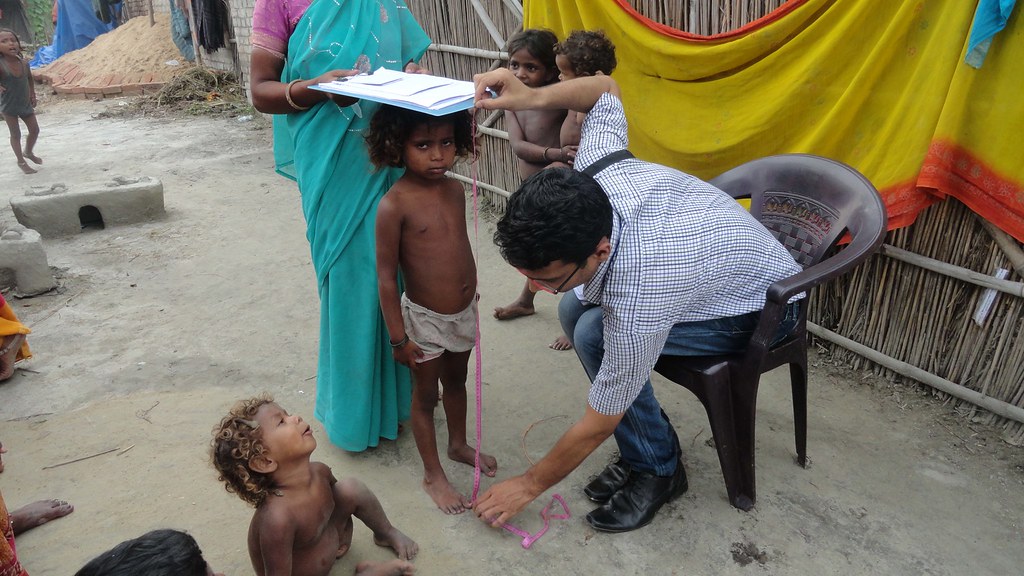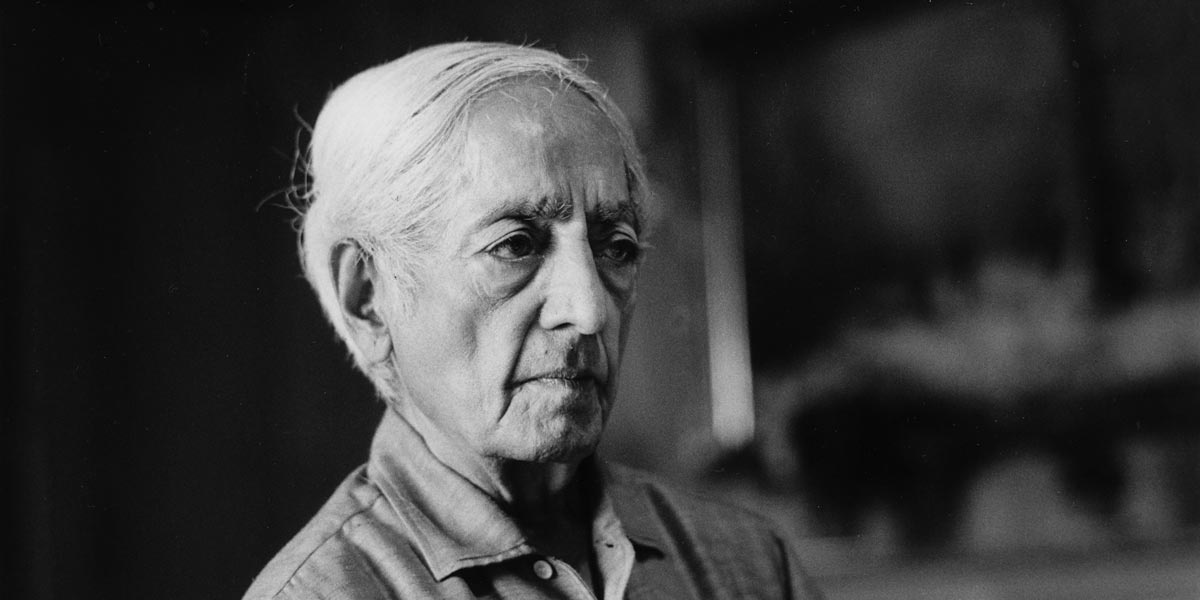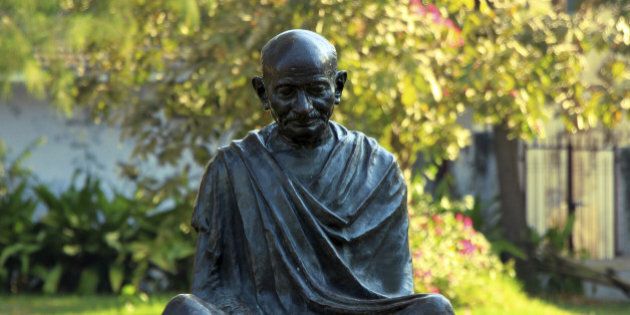Standing at the platform as I await the arrival of a train, two beams of light slowly broaden and converge into one. Gazing into the dark tunnel I begin to put my faith in the ephemeral illumination, to pull me out of my own darkened existence. Isn’t waiting at a platform same as waiting in life? For all it is a transitory stage between coming and going, beginning and end. As I gather every fibre of my being to overcome inertia and physically move my body in order to catch a train, a vicissitude of emotions takes place; from the anxiety of catching the right train at the right moment to the satisfaction of having made the right decision and the resultant joy of the journey thereafter.
Inside, there is a completely different world. People with dilapidated faces, co-travellers, strangers, all sharing my path, unconsciously becoming a part of my journey; the engines of their souls have long broken down. A phantom power drives them now.
There is a multiplicity in things they appear to be doing but universality in brevity of their actions. Indeed the chaos when it is all over the place looks synchronized. One cannot help but ask the question that is there a harmony in chaos and if yes, is that harmony a reflection of relatedness or a symptom of mass subversion?
Even though I feel I am free to do my own thing I am bound physically by the rules of civility, stationed within a transit. There is another train I would inevitably catch, the thought train, co-existent with the lack of physical motion; not doing anything allows me to think, stillness of my physical body propels me into the realm of thought.
I began repeating in my mind, a couple of illuminating lines from Pablo Neruda, “If we were not so single minded about keeping our lives moving, and for once could do nothing, perhaps a huge silence might interrupt this sadness of never understanding ourselves and of threatening ourselves with death.”
Pablo Neruda, in the above lines relates movement with a sadness caused by incomprehensibility of life and with the assumption that stillness is equal to death, a life that isn’t moving is the same as no life at all. However he makes the case that we could choose to halt for a moment and think, reflect on our actions. Movement is analogous to sound and stillness to silence. An interruption in constant movement, this stillness can probably help us to understand ourselves and be free from the fear of death. In the times we are living in, death is all around us and we have no choice but to halt, think before every action, every movement. Stillness that the coronavirus has brought has changed our perception about physical movement and severely altered our relationship with time. What is needed in such a situation is the emergence of a thought process that allows us to comprehend the precariousness of our lives and the reality in which we live. In my stillness I cannot help but be reminded of the days when I used to travel by the Metro and almost consequently would find myself engrossed into daydreaming.
When action is limited, thought begins to take over. It is a complete irony, traveling by a metro train while racing against time, to be in a timeless thought process. It is absurd to think of a life moving while there is widespread death around us putting an end to life, to movement. But it is precisely because of this ‘threat’ of rampant death or stillness that we need to embrace the constant motion of the thought-train.
“…the activity of the mind always creates for itself a gap between past and future.”(Hannah Arendt, The Life of The Mind, Book 2, p. 12)
When it comes to measuring time, we end up defining it in spatial categories. It is exclusive to the experience of travelling in a metro, that we choose to measure time by the number of stations that are still left to be covered. “I am at Rajiv Chowk, where are you?”, “I have still two more stations to go before I reach there”. These sentences are inseparable parts of an everyday metro talk.
Hannah Arendt states that time is spatially determined when it is informed by the continuity of our day to day lives. “It is due to thoroughgoing spatiality of our ordinary life that we can speak plausibly of time in spatial categories, that past can appear to us as something ‘lying behind’ us and the future as ‘lying ahead’”. (ibid. Book 1, p. 197) But in a metro in motion, I am alone, albeit unknowingly, enclosed within my square of thought where time cannot be spatially attributed because thinking identifies a persistent motion, an incessant change, “ that transforms all Being into Becoming instead of letting it be, and thus incessantly destroys its being present.” (ibid.p. 206) The mobility of personal time, marked by ageing of one’s body, constant motions of body’s internal organs is in contrast with the immobility and quietness of a thinking mind. I am getting somewhere, even when I thinking and do not appear to be physically moving.
Although the beginning and end of a journey are only superficially determined, actual, personal journey doesn’t begin or end with boarding and de-boarding a metro- train. People gushing in and out of the train suggest urgency in their attempts to catch time and place together. Agamben, in his essay, “What is Contemporary” argues that the untimeliness caused by sheer urgency that transforms time (like in our case, urgency of getting somewhere) is an anachronism that helps us to define time with adjectives like “too late” or “too soon” in relation to “now”. The moment when I say I am here, now; it has already passed. Both the past moment and the future moment are informed by each other. The former is in anticipation of the latter and the latter is consequential of the former. This rampant rush of getting somewhere “on time”, whether by a metro or through life, only pertains to the physical world, a world that binds us in a ‘timeliness’ and forces us to act and behave accordingly.
In a metro while being both in a state of rest and in motion, one can jump the linearity of time and witness the disruption of space’s relationship with time that inexorably drives a thinking process.
It creates a zone where one could be enclosed in a parallelogram of thought. It breaks the unidirectionality of thought and compels one to think in all directions. To me, in a metro train, time appears to be frozen; everything appears to be an ensemble of separate snapshots captured from everyday life without being attached to either a time or a place.
For me, it is a distinctive metro experience to feel safe and be one with the crowd while being one amongst the crowd. My feet synchronize (along with everybody else’s 😉 with the movement of my thoughts. I don’t mind being under surveillance because it is the invisible thought domain that allows me to experience my freedom. It provides me the necessary get away from my life dominated by physical action. There is no certitude of action in movement, as we know the feeling of “being stuck” is pervasive in a metropolitan experience of life. This feeling of dormancy is unshakeable, many a times casting us out into a labyrinth of darkness. Being in a metro is like coming out for a breath of fresh air, like a stolen piece of experience we keep only for ourselves from an assortment of worldly engagements.
If the dark times of the pandemic have taught us anything, it is about making peace with stillness, viewing it as an opportunity to stop, think and reflect. Thought is probably the only element that bridges the gap between a so called normal past and an unfathomable future. Also physical isolation of one’s body is not a necessary condition for emergence of thought for one is in the solitude of one’s mind when one is thinking. Inactivity does not imply end of movement, as the movement of thoughts cannot be ceased and owing to the dire need of time, thought must be propelled into untraveled paths, especially into the darkened ones.
Shrimansi Kaushik is pursuing her Masters in English Literature from Delhi University.














